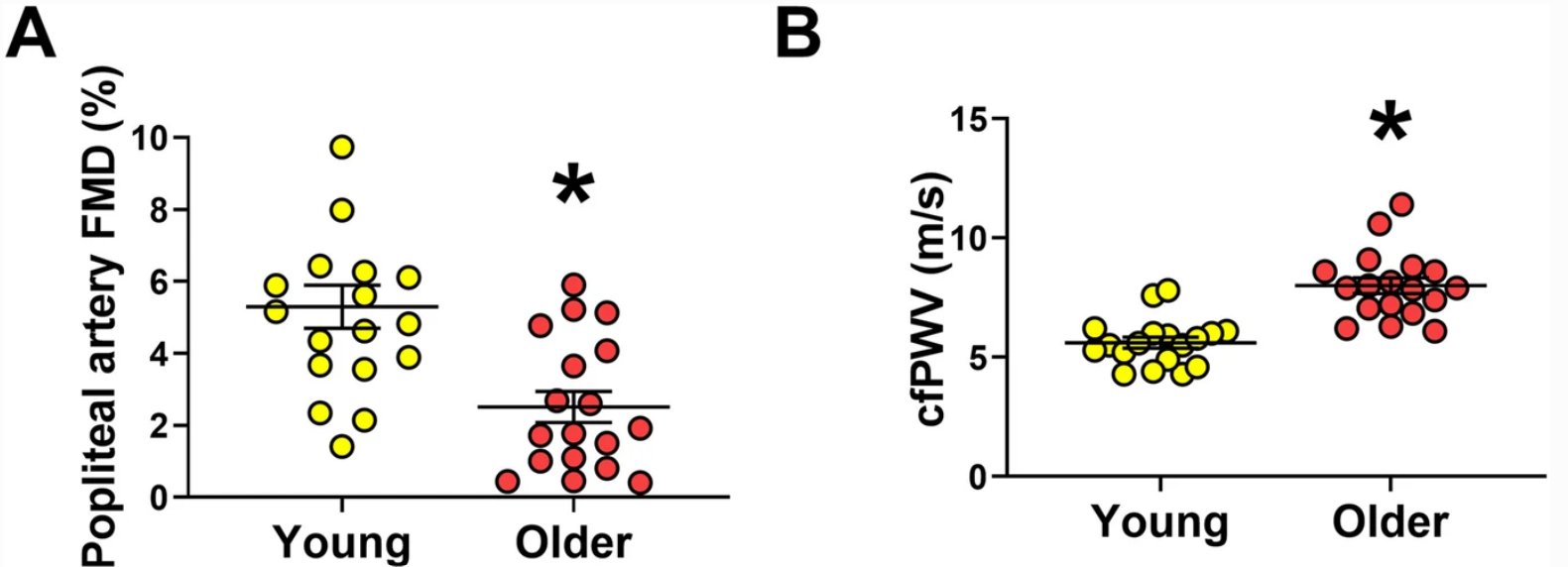Type 2 Diabetes Drug Revitalizes Aged Arteries
A drug that lowers blood sugar (empagliflozin) improves age-related blood vessel dysfunction associated with cardiovascular disease in mice.
Highlights
- Aged humans and mice both display vascular dysfunction, stiffened arteries that are unable to dilate.
- Treating aged mice with the type 2 diabetes drug empagliflozin (Empa) improves their vascular dysfunction.
- Empa treatment also decreases the abundance of a protein called F-actin, which appears to contribute to age-related vascular dysfunction.
Our blood vessels have the remarkable capability of dilating and constricting to facilitate blood flow to active organs and tissues. However, with age, they can become stiff and unable to regulate blood flow, making the heart work harder, and leading to cardiovascular disease. Cardiovascular disease is the leading cause of death in the world, and as the aging population increases so too will the incidence of cardiovascular disease, unless something is done.
Published in GeroScience, Manrique-Acevedo and colleagues from the University of Missouri demonstrate that administering a drug originally designed for type 2 diabetes, Empa, mitigates age-related vascular dysfunction in aged mice. To support the validity of their model, the Missouri-based research team showed that both older individuals and older mice display reduced vascular dilation and arterial stiffening compared to young individuals and mice. Furthermore, Empa treatment improves this vascular dysfunction and reduces the abundance of a protein associated with arterial stiffening that accumulates with age in artery cells called F-actin. These findings suggest that Empa could slow or prevent blood vessel aging.
Older Adults and Mice Exhibit Vascular Dysfunction
To confirm the progression of age-related vascular dysfunction, Manrique-Acevedo and colleagues compared older adults (average age of 61) to younger ones (average age of 25). They measured arterial flow-mediated dilation – the degree of artery dilation with increasing blood flow – and found that older adults have reduced levels of dilation. To determine arterial stiffness, they measured the older adults’ carotid-femoral pulse wave velocity (cfPWV). The Missouri-based team found higher degrees of arterial stiffening in older adults compared to younger ones. The findings confirm that the arteries of older individuals are dysfunctional, unable to dilate due to stiffness and compromising blood flow.

Manrique-Acevedo and colleagues then examined whether age-related vascular dysfunction occurs in mice. Similar to aged adults, they found that aged mice exhibit reduced flow-mediated dilation compared to young mice. The researchers then measured the abundance of a protein (F-actin) associated with arterial stiffening and found higher levels in aged mice. These findings confirm an inverse correlation that entails reduced vascular function is due to increased arterial stiffening with age.
“Our findings in young and older adults confirm previous clinical data demonstrating the impact of aging on endothelial function and arterial stiffness,” said Manrique-Acevedo and colleagues. “Importantly our rodent model of aging recapitulates these human findings by exhibiting endothelial dysfunction and increased arterial stiffness.”
Empa Mitigates Age-Related Vascular Dysfunction
Clinical trials have shown that using a class of blood sugar-lowering medications called SGLT2 (sodium glucose co-transporter 2) inhibitors reduce adverse cardiovascular events, like heart attacks. These glucose-transporting proteins also decrease the risk of cardiovascular disease-related mortality. Researchers have sought to find whether SGLT2 inhibitors like the drug Empa confer these benefits by mitigating age-associated deterioration of vascular function and increased arterial stiffness.
To test this, Manrique-Acevedo and colleagues fed aged mice a diet infused with Empa for six weeks. Following Empa administration, aged mice displayed enhanced vascular dilation and reduced stiffness. They also found that Empa diminished the presence of F-actin, providing more evidence that the drug ameliorates arterial stiffening. These findings suggest that Empa mitigates vascular dysfunction and arterial stiffening associated with aging, which could provide a path toward preventing cardiovascular disease as we age.

The findings of Manrique-Acevedo and colleagues suggest that aged arteries are unable to dilate because the accumulation of F-actin makes them stiff and inflexible. Interestingly, treatment with the drug Empa, initially designed to lower blood sugar for type 2 diabetes patients, improves dilation and diminishes arterial stiffness. This raises the possibility of perhaps repurposing the drug to prevent age-associated vasculature deterioration.
A month’s supply of Empa can be purchased for around $4. Some common side effects associated with the drug to take into consideration include urinary tract infection, high cholesterol levels, and sometimes respiratory infections.
Other SGLT2 inhibitors like dapagliflozin have been shown to improve vascular dilation while reducing arterial stiffness in patients with type 2 diabetes. Thus, the possibility exists that the SGLT2 inhibitor class of drugs could have the same effect in delaying vascular aging by improving blood vessel function. Empa is the first SGLT2 inhibitor confirmed to increase blood vessel dilation and reduce stiffness in aged mice, though, so more preclinical trials will be needed.
Model: 72-week-old C57BL/6J male mice
Dosage: 14 mg/kg/day empagliflozin-enriched diet for six weeks

